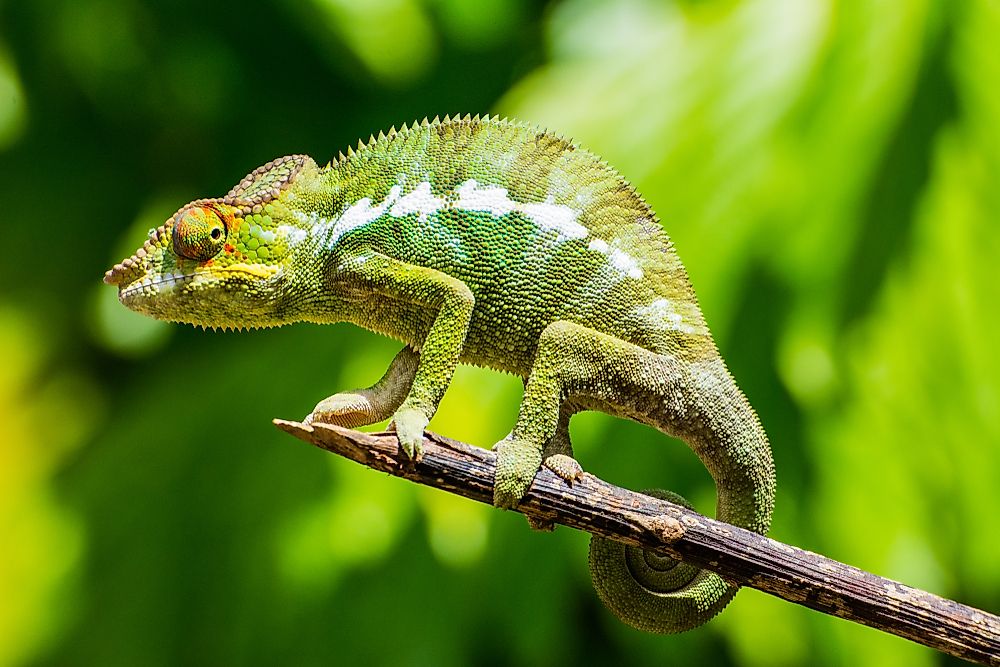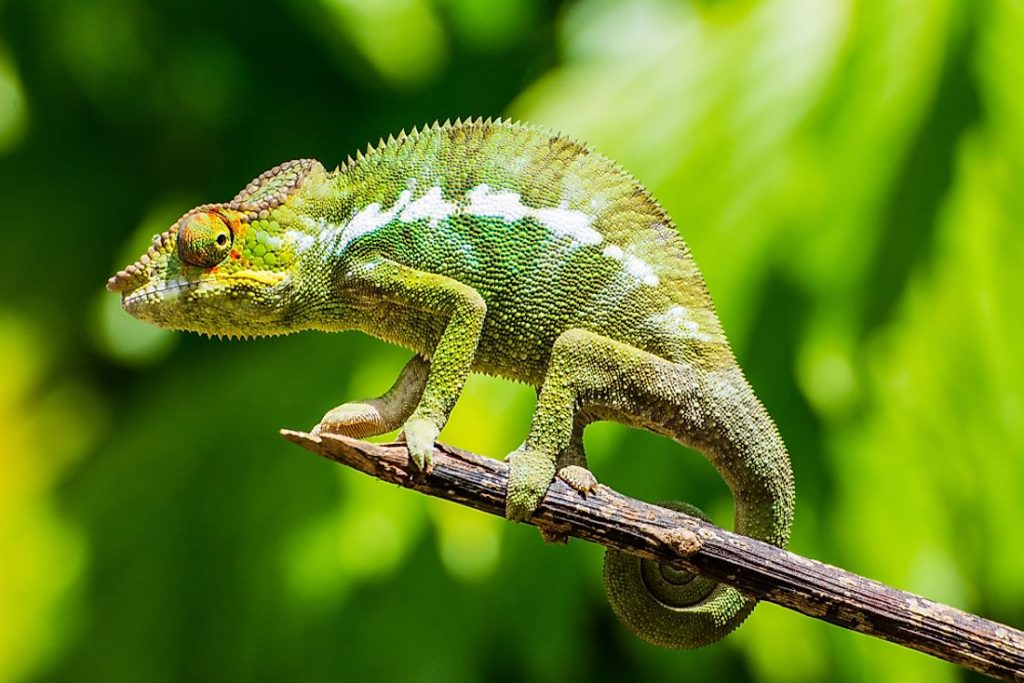If you’ve ever seen a chameleon, you may have wondered what kind of animal it is. With its unique appearance and ability to change colors, it’s easy to mistake it for something other than a reptile. So, is a chameleon really a reptile?
The short answer is yes, chameleons are indeed reptiles. However, there’s more to their classification than just their scaly skin. In this article, we’ll take a closer look at what makes chameleons reptiles and what sets them apart from other species in this diverse group of animals. Let’s dive in!

Is a Chameleon a Reptile?
If you’ve ever seen a chameleon, you know that these unique creatures are fascinating to watch. With their ability to change color, their long tongues, and their unique eyes, they’re unlike any other animal on the planet. But what exactly are they? Are they reptiles, or something else entirely? In this article, we’ll explore the question of whether a chameleon is a reptile or not.
What is a Reptile?
Before we can answer the question of whether a chameleon is a reptile or not, we need to define what a reptile is. Reptiles are a class of animals that are cold-blooded, have dry skin covered with scales or plates, and lay eggs on land. They’re also characterized by their ability to breathe air with lungs, rather than through gills like fish.
There are many different types of reptiles, including snakes, lizards, turtles, and crocodiles. All of these animals share the same basic characteristics that define them as reptiles.
Chameleons: Reptiles or Something Else?
So, now that we know what a reptile is, we can answer the question of whether a chameleon is one or not. The answer is yes, chameleons are indeed reptiles.
Chameleons share many of the same characteristics as other reptiles. They’re cold-blooded, have dry skin covered with scales, and breathe air with lungs. They also lay eggs on land, just like other reptiles.
However, chameleons are unique in many ways. They have the ability to change color to blend in with their surroundings, which is a trait not found in any other reptiles. They also have long, sticky tongues that they use to catch insects, and their eyes can move independently of each other, giving them a 360-degree view of their surroundings.
The Benefits of Being a Reptile
Being a reptile has many benefits. One of the biggest benefits is that reptiles are able to survive in many different types of environments. They’re found on every continent except for Antarctica, and they can live in deserts, rainforests, and even in the ocean.
Reptiles are also able to go long periods of time without food or water, which is a valuable trait in environments where resources are scarce. They’re also able to regulate their body temperature, which allows them to survive in extreme heat or cold.
Chameleons vs Other Reptiles
While chameleons are indeed reptiles, they’re quite different from other reptiles in many ways. For example, most reptiles have a very predictable pattern of behavior, while chameleons are much more unpredictable. They’re also much more sensitive to changes in their environment, which is why they’re able to change color.
Another major difference between chameleons and other reptiles is their diet. While most reptiles eat a variety of foods, including plants and animals, chameleons are strictly insectivores.
Conclusion
So, is a chameleon a reptile? The answer is yes. While they’re certainly unique among reptiles, they share many of the same characteristics as other members of this class of animals. Whether you’re fascinated by chameleons or other reptiles, there’s no denying that these creatures are some of the most interesting and unique animals on the planet.
Frequently Asked Questions
Is a Chameleon a Reptile?
Yes, a chameleon is a reptile. It belongs to the family of Chamaeleonidae, which includes around 180 species. Chameleons are cold-blooded animals, which means they rely on external sources of heat to regulate their body temperature. They have scaly skin, lay eggs, and breathe through their lungs, all characteristics of reptiles.
Chameleons are known for their ability to change color, which is a unique feature among reptiles. They can change their skin color to blend in with their surroundings, communicate with other chameleons, and regulate their body temperature. Chameleons are fascinating creatures that make great pets, but they require specialized care and attention.
Do Chameleons Make Good Pets?
Chameleons can make good pets for experienced reptile owners who are willing to provide the specialized care they need. Chameleons require a specific type of environment with proper lighting, heating, and humidity levels, as well as a varied diet of live insects. They also need regular veterinary check-ups and attention to their behavior and health.
Chameleons can be fascinating to watch and interact with, but they are not recommended for first-time reptile owners or those who are not committed to providing the necessary care. It is important to do research and consult with a veterinarian or experienced reptile owner before deciding to bring a chameleon into your home.
What Do Chameleons Eat?
Chameleons are insectivores, which means they primarily eat insects. They have a long, sticky tongue that they use to catch prey, and they can eat a variety of insects, including crickets, mealworms, and waxworms. Some species of chameleons may also eat small amounts of vegetation or fruit.
It is important to provide a varied diet for chameleons to ensure they get all the necessary nutrients. Live insects should be dusted with calcium powder before feeding to help prevent metabolic bone disease. Chameleons should also have access to clean water at all times.
How Long Do Chameleons Live?
The lifespan of a chameleon depends on the species and the care it receives. In general, chameleons can live anywhere from 5 to 10 years in captivity, with some species living up to 20 years. Factors that can affect a chameleon’s lifespan include diet, environment, and genetics.
Proper care and attention, including regular veterinary check-ups and a healthy diet, can help ensure a chameleon lives a long and healthy life.
Do Chameleons Carry Diseases?
Like all animals, chameleons can carry diseases that can be transmitted to humans. Some common diseases that can be transmitted by reptiles include salmonella, campylobacter, and cryptosporidiosis. To minimize the risk of disease transmission, it is important to practice good hygiene when handling chameleons or cleaning their enclosure.
Washing hands thoroughly with soap and water after handling a chameleon or cleaning its enclosure can help prevent the spread of disease. It is also important to keep chameleons away from young children, pregnant women, and individuals with weakened immune systems.
DO NOT GET A CHAMELEON! Get One Of These Instead!
In conclusion, a chameleon is indeed a reptile. Despite its unique physical characteristics and behavior, it still falls under the reptile classification due to its cold-blooded nature, scaly skin, and ability to lay eggs.
However, its ability to change color and blend into its environment is a fascinating adaptation that sets it apart from other reptiles. This unique feature has made it a popular pet and a subject of study for scientists.
Overall, understanding the classification and characteristics of different animals is important in appreciating their diversity and role in the ecosystem. The chameleon may be a reptile, but its distinct traits make it a fascinating creature that continues to captivate and intrigue us.


